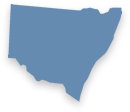Craft Art Photography Entry Form
Art, Product & Photography Regulations and Schedules
General
Judging will be conducted from 22 March 2021
Entry Fee: $6.00 per entry. see entry form
Entries close: Friday 5 March 2021. No late entries will be accepted.
Exhibits due:
By Post to : Sarah and Perry Wheeler, PO Box 1437, Victor Harbour, SA 5211 to be received by 15 March 2021 or by hand with prior arrangement to 239 Pambula Road Hindmarsh Valley South Australia.Exhibits received after this time will not be judged.
- An Exhibit Identification Ticket must be included with each article entered.
- All exhibitors must make their own arrangements for the collection or return postage of their exhibits at the end of the show. Exhibits will not be mailed back to exhibitors unless a suitable return post-paid pack is included.
- Members and non-members of the AAA are invited to exhibit.
- The judge’s decision is final and no correspondence will be entered into. Where time allows, the judge will give comments on the winning exhibits.
Judge (Art and Photography) – John Lacey
Having painted for around forty years and the last 16 professionally, John has a wealth of experience as an artist. Although self-taught he has made this industry his life and painted in watercolour and acrylic as a hobby for around twenty years before switching to oil. He has won awards in all the above mediums and has had over twenty, one person exhibitions in SA, WA, NSW, Vic and ACT. John is sought after as a teacher, both locally and interstate, and has judged several art shows including the Alexandrina, Mildura and Flagstaff Hill Rotary Art Exhibitions. For more in formation visit www.johnlacey.com.au
Judge (Product) – Jan Bentley
I have always been interested in craft and found my niche when we purchased alpacas in 1996. I have been spinning for many years now, branching out by learning to felt and weave. I’ve entered craft sections at Alpaca and other country shows and won many awards. I enjoy seeing what others create with fleece, so look forward to any opportunity to judge.
Art Section Schedule
Section 1 Junior Art:
Conditions –
- All art must have been executed by the exhibitors themselves within the last 12 months.
- Exhibits must not have any identifying features on them i.e. stud name or logo, Exhibitor name, etc. Exhibits with identifying features will not be judged. If your exhibit does have an identifying feature, please make sure it is removed or covered before sending it in.
- Paintings, drawings or other artwork should be mounted on cardboard or corflute. Attention should be given to adequate packaging for postage and transportation.
- Any painting or drawing accepted in any medium i.e. pencil, paint, oil etc.
- Sculptures can be of a range of mediums of which alpaca fibre is the focus.
Eg. Framework of wood, wire etc with alpaca wool on the outside layer.
- Artwork can be collected or returned in a post-paid pack.
Judging will commence on 22 March 2021.
Entry Fees: $6.00 per exhibit
Prizes: Place certificates will be awarded
Entries close: 5 March 2021
Class AW 1 – 6 years and under 11 years – Artwork containing at least one alpaca.
Class AW 2 – 6 years and under 11 years – Artwork or Sculpture using alpaca fibre.
Class AW 3 – 11 years and under 16 years – Artwork containing at least one alpaca.
Class AW 4 – 11 years and under 16 years – Artwork or Sculpture using alpaca fibre.
CHAMPION JUNIOR VISUAL ARTIST
Section 2 Art:
Conditions –
- All art must have been executed by the exhibitors themselves within the last 12 months.
- Exhibits must not have any identifying features on them i.e. stud name or logo, Exhibitor name, etc. Exhibits with identifying features will not be judged. If your exhibit does have an identifying feature, please make sure it is removed or covered before sending it in.
- Paintings, drawings or other artwork can be mounted on cardboard or corflute. Attention
should be given to adequate packaging for postage and transportation.
- Any painting or drawing accepted in any medium i.e. pencil, paint, oil etc.
- Sculptures can be of a range of mediums of which alpaca fibre is the focus. Eg. Framework of wood, wire etc with alpaca wool on the outside layer.
- Artwork can be collected or returned in a post-paid pack.
Class AS 1 – 16 years and over – Artwork containing at least one alpaca.
Class AS 2 – 16 years and over – Artwork or Sculpture using alpaca fibre.
CHAMPION ARTWORK
Product Section Schedule
Sections to Be Judged –
- Hand Spinning.
- Hand Weaving.
- Hand Knitting or Crocheting.
- Felting.
General
- Members and non-members of the AAA are invited to exhibit.
- Exhibits received without samples will be displayed but not judged.
- Exhibits that are the incorrect weight in hand spinning will be displayed but not judged.
- There is a limit of two exhibits per Exhibitor per class.
- Exhibits must have been completed within the last 12 months and not shown at a previous AAA National Show.
- Where commercial yarns are permitted, a sample must be attached, with any labels (ball bands etc.) from the yarn.
- The judge’s decision is final, and no correspondence will be entered into. Where time allows, the judge will give comments on the winning exhibits.
- Trims/accessories: These can be used in small quantities to enhance an article. These include buttons, laces, zips, metallic yarns, beads, ribbons, etc.
- Alpaca blends: This show is encouraging the use of alpaca and as such, blends must contain at least 50% alpaca.
SECTION 1: Hand Spinning
This section will judge spinning of alpaca and alpaca blends. It will differentiate between huacaya and suri in the lace weight classes only.
Conditions
- A staple of original fibre(s) or sample of tops, sliver etc. must be attached to all exhibits. Entries for all categories may use commercially combed or carded fibre. However, judging points for preparation (where applicable) will not be awarded to skeins using such commercially prepared fibre.
- State intended purpose of yarn.
- All classes are open to white or naturally coloured yarn, except where stated.
- Judging will be based on:
- Fleece and yarn for end use.
- Degree of twist in single and ply.
- Spinning system employed (woollen or worsted).
- Evenness of spin and ply.
- Washing, scouring and presentation.
- Please attach the Exhibit Identification Ticket using a safety pin.
- Work must have been completed within the last 12 months and not shown at a previous AAA Show.
- Skeins to be presented in one or two skeins. Make sure they can’t be separated from each other, or their tags and samples.
- In presentation, make sure the skeins can be examined, so ensure they have sufficient ties, and can be opened out by the judge.
Class CS1
Specimen of fine hand spun yarn in suri alpaca, plied, not less than 50 grams. 19 wraps per inch or finer. State intended purpose.
Class CS2
Specimen of fine hand spun yarn in huacaya alpaca, plied, not less than 50 grams. 19 wraps per inch or finer. State intended purpose.
Class CS3
Specimen of hand spun, plied yarn in Huacaya or Suri alpaca. Between 11 and 14 wraps per inch. Not less than 100 grams. State intended purpose.
Class CS4
Specimen of hand spun, plied Huacaya alpaca in bulky yarn, between 8 and 11 wraps per inch. Not less than 100 grams. State intended purpose.
Class CS5
Specimen of hand spun, plied alpaca blend. Not less than 100 grams. Wraps per inch open. State blend and purpose.
Class CS6
Specimen of hand spun alpaca novelty yarn. This yarn can incorporate commercial tops or sliver, can be dyed or overdyed. The yarn can be plied or a single with the twist set. Not less than 100 grams. Wraps per inch open. State purpose and technique.
Class CS7
Specimen of alpaca yarn using a dying technique, either in the fleece or the yarn (e.g. rainbow dyeing, cram pot dyeing, overdyeing). Commercially prepared alpaca can be used in this class without penalty. Wraps per inch open. Not less than 100 grams.
Class CS8 NOVICE
Specimen of alpaca or alpaca blend, hand spun by a novice spinner (see Definitions). Not less than 50 grams. Wraps per inch open.
CHAMPION HAND SPUN YARN EXHIBIT
SECTION 2: Hand Weaving
Conditions
- Where applicable a staple of the original fibre is to be attached. In the case of commercial yarn, a sample of the yarn is to be attached.
- All distinguishing marks or labels to be removed or covered.
- Please attach the Exhibit Identification Ticket using a safety pin.
- Judging will be based on:
- Suitability of materials and patterns to classification.
- Regularity of weave, set, beat and selvages.
- Originality.
- Quality of make-up and finish of garment or article.
- Information about the entry as to purpose/application of design or weaving technique used.
- Work must have been completed within the last 12 months and not shown at a previous AAA Show.
Class CW1
Hand woven garment or article using 50% hand spun alpaca.
Class CW2
Hand woven garment or article using commercially prepared alpaca or alpaca blend yarn.
Class CW3
Hand woven item using 50% alpaca, hand spun or commercial, not mentioned. For example
wall hangings or tapestries.
Class CW4 NOVICE
Article of weaving by a novice weaver (see Definitions) using alpaca or alpaca blend yarn, either hand spun or commercially spun, or a combination.
CHAMPION WEAVING EXHIBIT
SECTION 3: Hand Knitting or Crocheting
Please read conditions for presentation, judging criteria and definitions.
Conditions
- Soiled work will not be judged.
- All exhibits to be the work of Exhibitors.
- Yarn label, or staple of fibre or sample of tops (in hand spun classes) must be attached to the article.
- All classes are open to white, naturally coloured or dyed fibre.
- Entries into the hand spun, hand knit classes may use commercially combed or carded fibre. However, judging points for preparation (where applicable) will not be awarded to garments or articles using such commercially prepared fibre.
- Judging based on:
- Spinning (where applicable).
- Choice of yarn for pattern use.
- Evenness of knit or crochet.
- Evenness and quality of make-up and finish of garment.
- Presentation.
- Please attach Exhibit Identification Ticket using a safety pin. Any labels, identifying tags or
marks are to be covered or removed.
- In machine knitting, seams may be hand sewn or linked, but not over locked or machined.
Attach samples.
- Work must have been completed within the last 12 months and not shown at any previous AAA Show.
Class CK1
Hand knitted or crocheted garment from hand spun alpaca or alpaca blend.
Class CK2
Hand knitted or crocheted lace article from hand spun alpaca or alpaca blend.
Class CK3
Hand knitted or crocheted article using hand spun alpaca or alpaca blend.
Class CK4
Machine knitted garment using commercial yarn.
Class CK5
Machine knitted article using commercial yarn.
Class CK6
Hand knitted or crocheted garment using commercially prepared yarn.
Class CK7
Hand knitted or crocheted article using commercially prepared yarn.
Class CK8 NOVICE CLASS
Article hand knitted or crocheted from commercial yarn or hand spun, by a novice (see
Definitions).
Class CK9
Garment or article created by a team, e.g. one spinner, a knitter, weaver, lacemaker or crochet using at least 50% alpaca fibre. Emphasis in this class is on originality, creativity and
technique. Not eligible for champion.
CHAMPION KNIT/CROCHET EXHIBIT
SECTION 4: Felting
Conditions
- Attach samples of fibres used.
- All distinguishing marks or labels to be removed or covered.
- Please attach the Exhibit Identification Ticket using a safety pin.
- Judging will be based on:
- Evenness of fabric (where applicable).
- Originality.
- Quality of make-up and finish of garment or article.
- Degree of difficulty.
- Work must have been completed within the last 12 months and not shown at a previous AAA National Show.
Class CF1
Hand felted garment using alpaca. Embellishments using other fibres allowed.
Class CF2
Hand felted article using alpaca. Embellishments using other fibres allowed.
Class CF3
Article, garment or piece of felt not mentioned, using at least 50% alpaca.
Class CF4
Needle felted piece, 3D or flatwork, using at least 50% alpaca.
Class CF5
Hand felted garment or accessory using the nuno felting technique. Felt must be at least 50% alpaca.
Class CF6
Article or garment of wearable art. Emphasis here is on originality, colour, design, techniques and impact. At least 50% alpaca to be used.
Class CF7 NOVICE
Hand felted article or garment using at least 50% alpaca using any technique created by a novice
(see Definitions). Embellishments using other fibres allowed.
CHAMPION FELTED exhibit
Section 5: Junior Open
Class CJ1 6 years and under 11years any of the craft sections above.
Class CJ2 11 years to 16 years any of the craft sections above
Champion Junior Product Exhibit
Supreme Champion Product Exhibit
Definitions
ALPACA:
The natural fibre of the alpaca, which is a South American camelid. There are two types of fleece.
The suri has a fleece that forms long lustrous locks, and the huacaya which forms fleece in
bundles of crimpy soft fibre.
ARTICLE:
Articles are knee rugs, scarves, shawls or wraps, socks, beanies, hats. Where a class calls for an article, this means one (1) article only, e.g. 1 scarf, 1 pair of socks.
BLENDS:
These can be fibres that are used in conjunction with alpaca to create different effects with the yarn. They may include silk, cashmere (cashmere goat), wool (sheep), mohair (angora goat), bamboo, tencel, nylon glitz, thrums (loom waste) or silk noils.
COMMERCIAL YARNS:
Those yarns that have been purchased by the Exhibitor. They have been commercially
manufactured. In classes where these are permitted, attach to the exhibit a sample of the yarn and any tickets or labels that were supplied with the yarn.
FELTING:
The application of heat, agitation, water and soap to natural fibres to produce a fabric. Nuno felting uses this technique to felt fibres onto a cotton or silk fabric such as gauze or muslin.
GARMENT:
A garment is an article that can be fitted onto the adult body e.g. dress, skirt, slacks, jacket,
jumper, cardigan, vest.
NOVICE:
A craft person with less than 12 months experience in the craft specified by the class.
SAMPLE:
Where commercial yarns are permitted, a sample must be attached, with any labels (ball bands etc.) from the yarn.
Photography Section Schedule
Section 1: Photography
Conditions
- The photographs must have been taken by the Exhibitors themselves.
- Minimum size of image is to be A4 (210 x 297mm).
- Maximum size of image is to be A3 (420 x 297mm).
- Judging will be based on:
- The quality (focus, light, colour balance) and artistic impression (creativity) of the
photograph.
- How well the photograph depicts the category in which it was entered.
- Exhibits must not have any identifying features on them i.e. stud name or logo, Exhibitor name, etc. Exhibits with identifying features will not be judged. If your exhibit does have an identifying feature, please make sure it is removed or covered before sending it in.
- Photographs must be mounted on cardboard or corflute to protect them. Attention should be given to adequate packaging for postage and transportation.
- Photographs can be collected or returned in a post-paid pack.
Class PH1
Cria: A photograph containing one or more cria.
Class PH2
Alpaca Portrait.
Class PH3
Farm Scene: A photograph of a farm scene including at least one alpaca.
Class PH4
Humorous: A photograph that makes you laugh including at least one alpaca.
Place certificates will be awarded
Champion Photograph
Section 2: Junior Photography
Conditions
- The photographs entered must have been taken by the Exhibitors themselves.
- Minimum size of image is to be A4 (210 x 297mm).
- Maximum size of image is to be A3 (420 x 297mm).
- Judging will be based on:
- The technique and artistic impression (creativity) of the photograph.
- Age of Exhibitor as at 5 March 2021
- Exhibits must not have any identifying features on them i.e. stud name or logo, Exhibitor name,
etc. Exhibits with identifying features will not be judged. If your exhibit does have an identifying
feature, please make sure it is removed or covered before sending it in.
- Photographs must be framed or mounted to protect them and for display purposes. The frame
should be able to be hung with a hook. Attention should be given to adequate packaging for
postage and transportation.
- Photographs can be collected or returned in a post-paid pack.
Class JPH1
Photography: A photograph including at least one alpaca – Age of Exhibitor: 6 years and under
11years.
Class JPH2
Photography: A photograph including at least one alpaca – Age of Exhibitor: 11years to 16 years.
Place certificates awarded in each class.
Champion Junior PHOTOGRAPH
 Login / Signup
Login / Signup Regions
Regions







 Search
Search